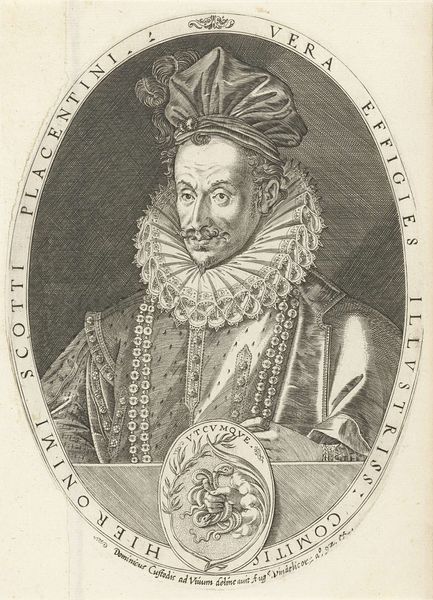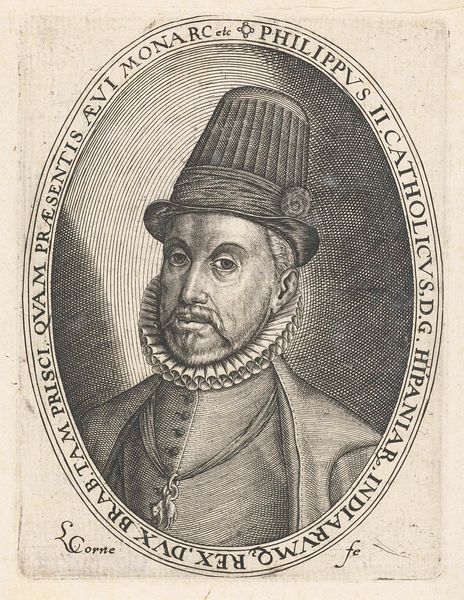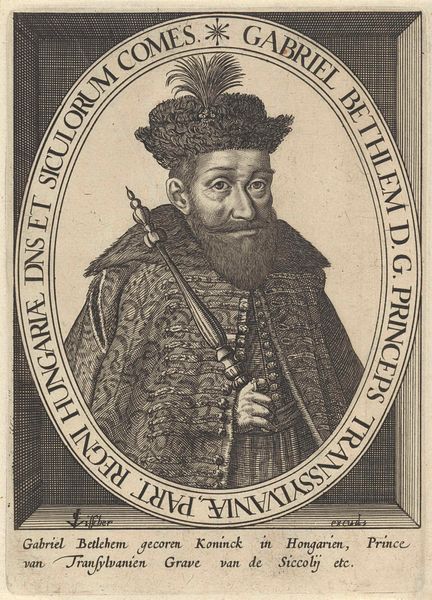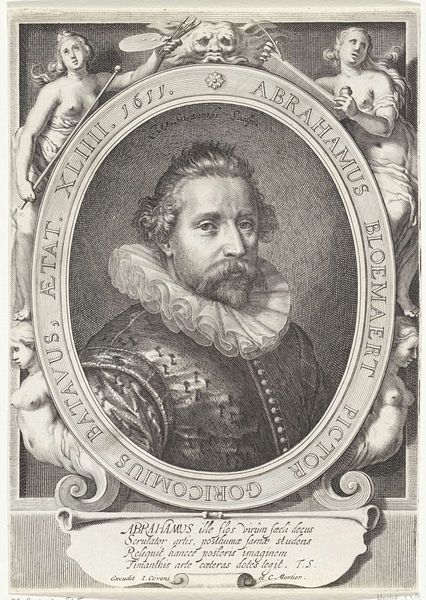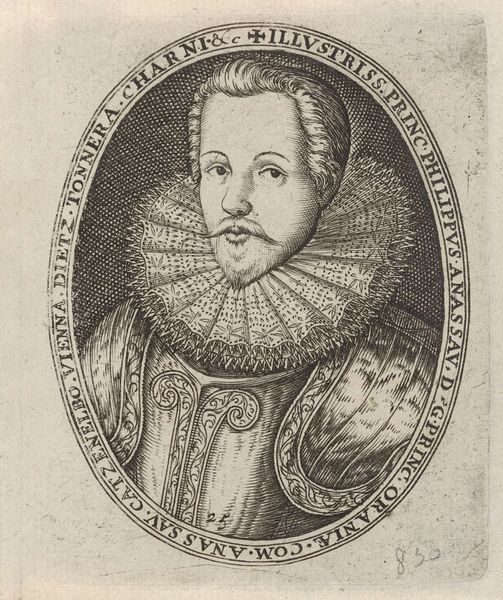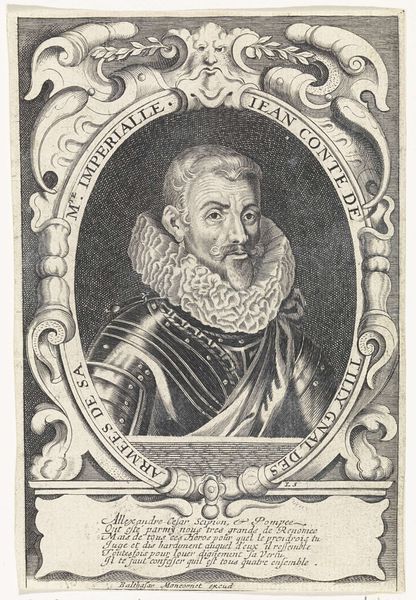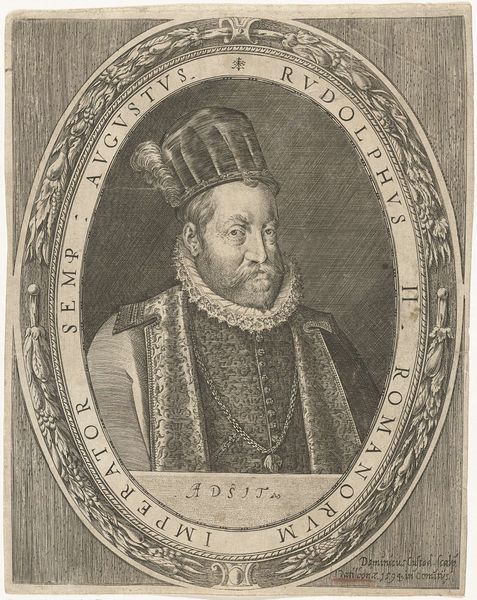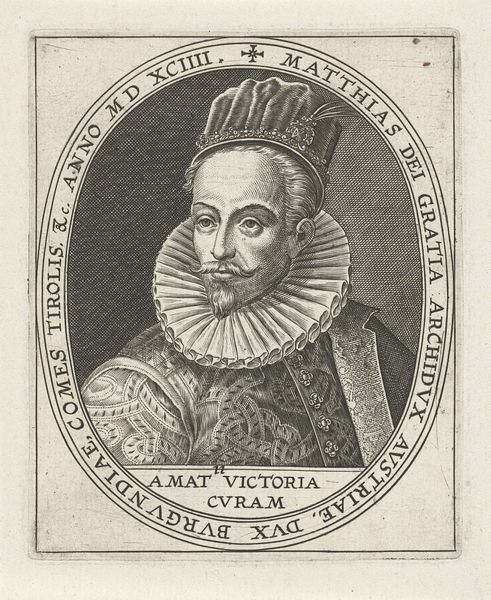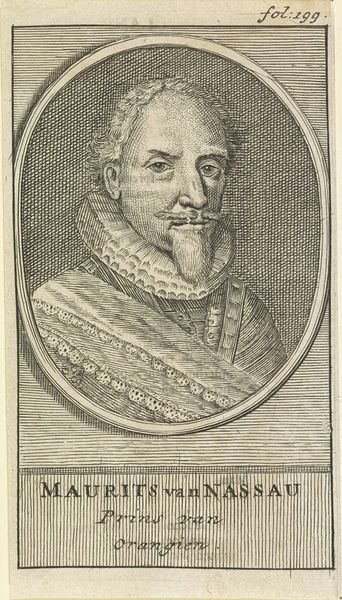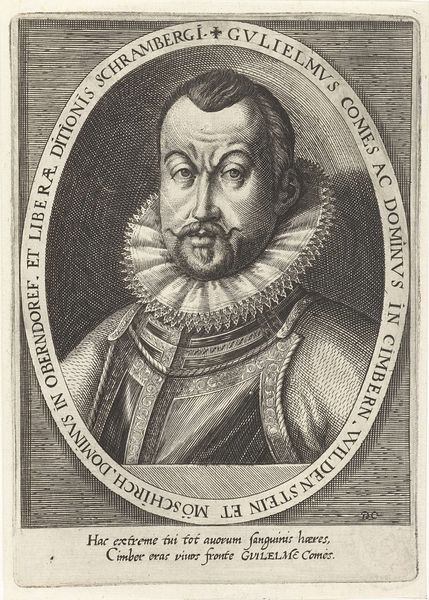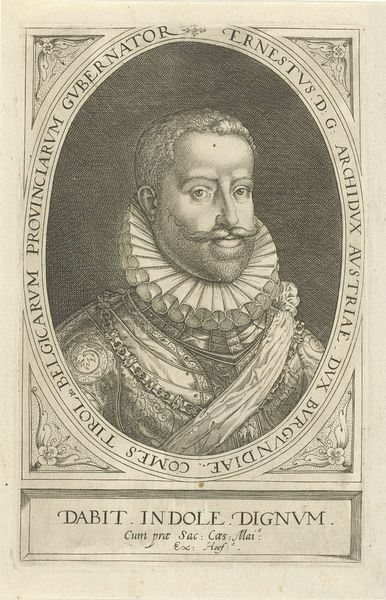
print, engraving
#
portrait
#
baroque
# print
#
caricature
#
engraving
Dimensions: height 93 mm, width 77 mm
Copyright: Rijks Museum: Open Domain
Curator: Here we have a portrait of Ernst van Oostenrijk by Lambert Cornelisz, dating from around 1593 to 1603. It's an engraving, part of the Rijksmuseum's collection. Editor: Right away, the meticulous line work is mesmerizing, it feels like peering through a window to another time. There is also a real stillness that speaks volumes about the person being represented. Curator: Indeed, Cornelisz employed the engraving technique with such precision. The medium, printmaking, in this case, also democratized art. Instead of solely paintings commissioned by the elite, here's a way to circulate the image and status of powerful figures more broadly. The use of print meant that multiples of these images could circulate relatively freely at the time. Editor: It's amazing how the density of those lines shapes his features! But beyond that, I sense an interesting mood. He is wearing these extravagant clothes and this serious look – a sense of melancholic nobility that maybe speaks to the burden of rule and perhaps, also to the social tensions of the time? I keep imagining how that ruff felt scratching his chin all day. Curator: Absolutely. Consider Ernst's role as governor of the Netherlands during a tumultuous period. This portrait isn’t just about the individual, but it signifies Habsburg power and its reach, reflected through clothing and the symbols around him in the engaving’s textual surround. Editor: And that text frames him completely, almost like he's perpetually under observation. The precision really conveys that kind of formal power. It has the overall visual effect that evokes this period and also conveys this deep personal intensity about who this guy was! Curator: Yes, the choice of engraving allows for that reproduction, and, of course, invites the kind of intimate yet distant observation you're speaking of. What was once a niche, bespoke and artistic endeavor, has been reproduced. The artist's original hand is no longer as obvious. Editor: It’s remarkable to reflect on these things that were part of creating art in that particular moment and to consider this intersection of the grand and the miniscule detail... almost like a conversation whispered across centuries, no? Curator: It's a layered history; in examining the materials, processes and social conditions of art making we glimpse aspects of our shared humanity through art.
Comments
No comments
Be the first to comment and join the conversation on the ultimate creative platform.


